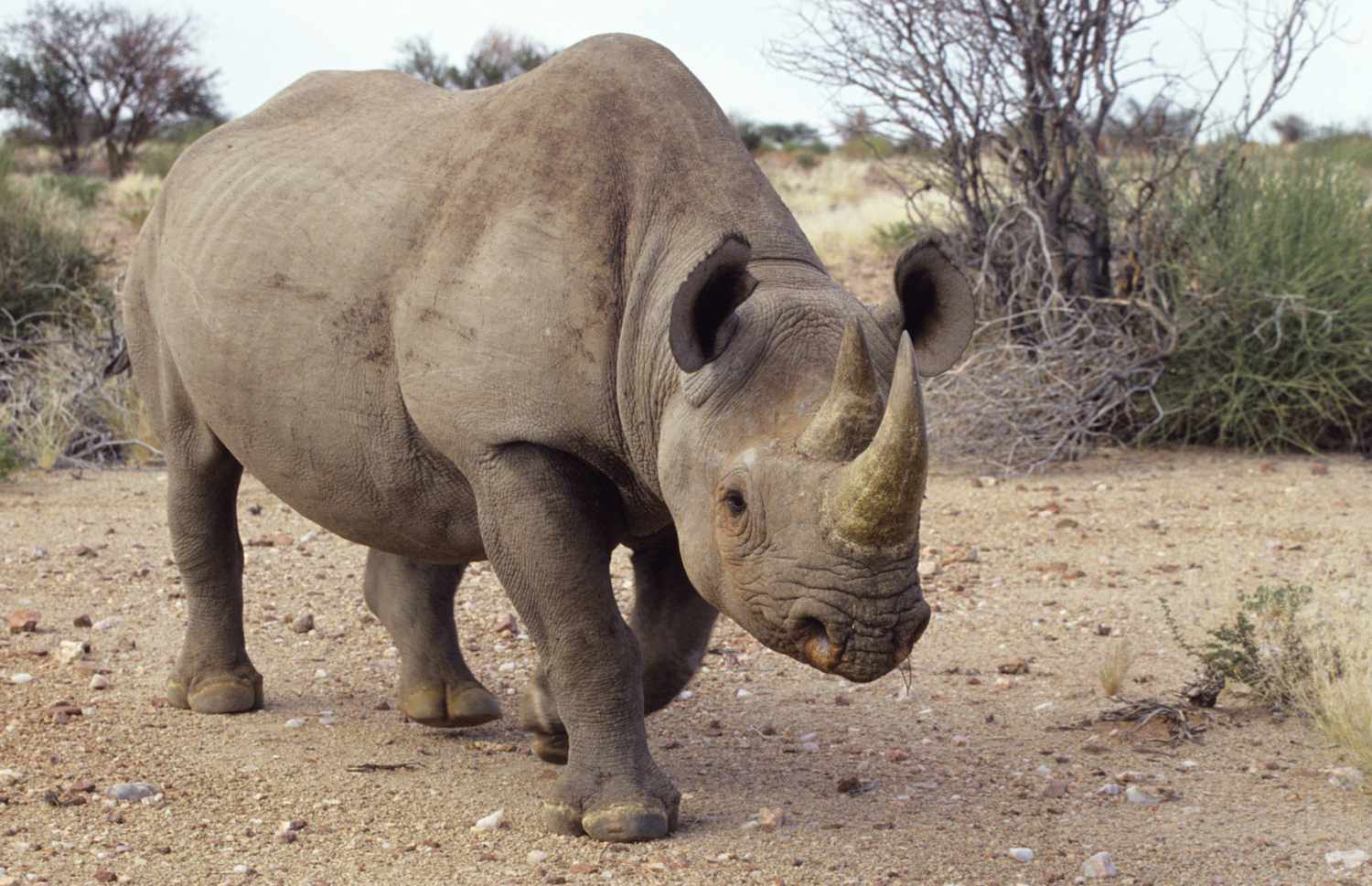
37 interesting facts about white rhinoceroses
- 👁️ 328
The white rhinoceros, with its imposing size and distinctive squared lips, stands as a magnificent yet critically endangered icon of African wildlife. Contrary to what its name might suggest, the white rhinoceros is not white but derives its name from a mistranslation of the Dutch word “wijd,” which refers to its wide mouth. As one of the two African species of rhinoceros, the white rhino plays a crucial role in its ecosystem, helping to shape the landscape and maintain the health of the grasslands. Despite their peaceful nature, white rhinos face relentless threats from poaching and habitat loss, underscoring the urgent need for conservation efforts. Here are 37 interesting and informative facts about white rhinoceroses that highlight their characteristics, behavior, and the challenges they face.
- The white rhinoceros is divided into two subspecies: the Southern white rhinoceros and the Northern white rhinoceros.
- The Southern white rhinoceros is the most numerous of all rhino species, with a population of around 18,000 individuals.
- The Northern white rhinoceros is critically endangered, with only two females remaining in the world as of 2021.
- White rhinoceroses have two horns made of keratin, the same material as human hair and nails.
- They are the second-largest land mammal after the elephant.
- White rhinos can weigh up to 2,300 kilograms (5,070 pounds) for males and 1,700 kilograms (3,750 pounds) for females.
- Their lifespan in the wild can reach up to 40 years.
- White rhinos have a wide mouth adapted for grazing on grass.
- They are mostly found in grassland and savannah habitats.
- Despite their size, white rhinos can run at speeds of up to 50 km/h (31 mph).
- They are generally solitary animals but sometimes form groups called crashes.
- A white rhino’s skin can be up to 5 cm (2 inches) thick.
- They use their horns not only for defense but also to dig for water and roots.
- White rhinos have poor eyesight but a very keen sense of smell and hearing.
- They communicate through a complex array of sounds, including grunts, snorts, and growls.
- Rhinos are known to have a symbiotic relationship with oxpeckers, birds that eat parasites off their skin.
- Females give birth to one calf every 2-3 years after a gestation period of about 16 months.
- Calves stay with their mothers for up to three years.
- White rhinos mark their territory with piles of dung and urine sprays.
- They wallow in mud to protect their skin from the sun and parasites.
- The biggest threat to their survival is poaching for their horns, which are falsely believed to have medicinal properties in some cultures.
- The name “white rhinoceros” was a misinterpretation of the Dutch word “wijde,” which means “wide” and refers to their mouth.
- Conservation efforts have helped the Southern white rhinoceros recover from near extinction in the early 20th century.
- Northern white rhinos were once found in several countries across East and Central Africa but are now considered extinct in the wild.
- White rhinos have a complex social structure and often use communal dung heaps called middens.
- They can consume up to 120 pounds of grass daily.
- Rhinos have three toes on each foot, making them perissodactyls (odd-toed ungulates).
- Their closest living relatives are horses and tapirs.
- White rhinos have very little hair, except for ear fringes and tail bristles.
- They are diurnal, being most active during the day and resting during the hottest hours.
- The horn of a white rhino can grow up to 150 cm (59 inches) in length.
- Conservation programs include anti-poaching measures, habitat restoration, and captive breeding.
- White rhinos use midden sites not only to mark territory but also as communication hubs.
- Their ears can move independently to pick up sounds more effectively.
- In the wild, their primary predators are humans. Calves may fall prey to lions and hyenas.
- The first successful captive breeding of white rhinos occurred in the early 20th century.
- Rhino horn is made of keratin and will regrow if it is removed or broken off.
White rhinoceroses are not only marvels of nature due to their size and strength but also play an integral role in their ecosystems. Their precarious situation underscores the critical importance of wildlife conservation efforts to ensure these majestic animals do not vanish from our planet. Through dedicated protection and rehabilitation programs, there is hope for the survival and flourishing of both the Southern and Northern white rhinoceros populations. The story of the white rhinoceros serves as a powerful reminder of the impact humans have on wildlife and the responsibility we hold to protect these magnificent creatures for future generations. As we continue to battle the threats they face, the white rhinoceros stands as a symbol of conservation challenges and successes, inspiring ongoing efforts to preserve the natural world and its inhabitants.
The white rhinoceros, with its imposing size and distinctive squared lips, stands as a magnificent yet critically endangered icon of African wildlife. Contrary to what its name might suggest, the white rhinoceros is not white but derives its name from a mistranslation of the Dutch word “wijd,” which refers to…